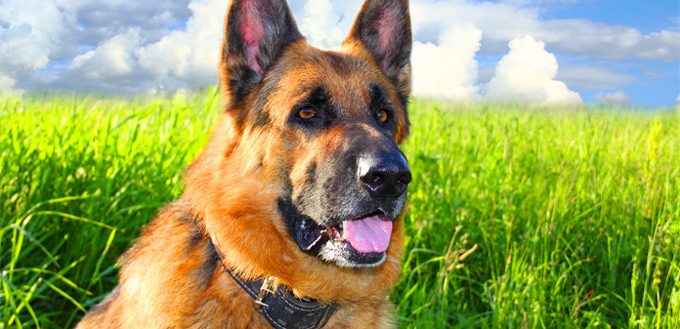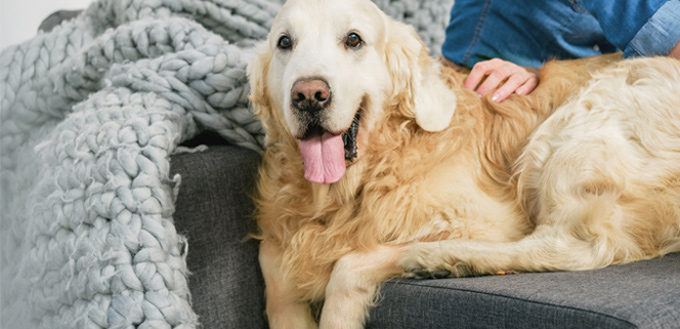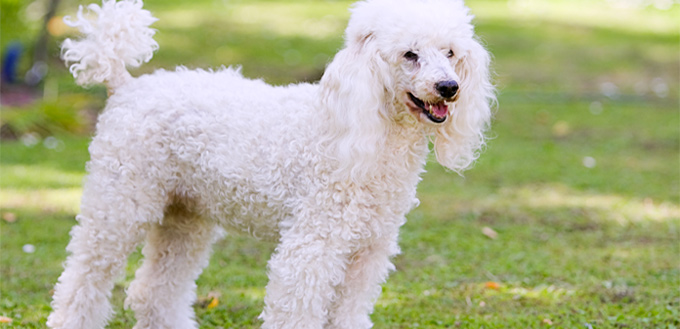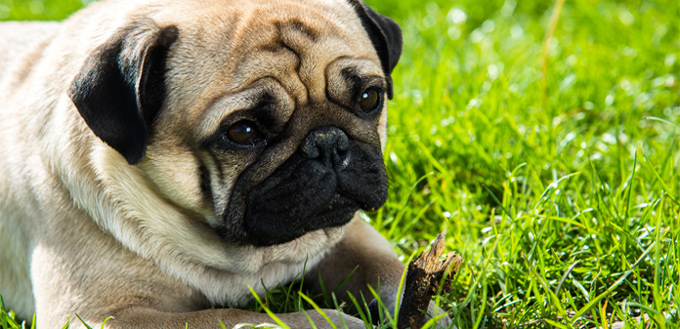Animals, particularly dogs, have long been known to benefit their owners in many ways. Working dogs assist with specific tasks, while other canines offer companionship, for instance. Looking after any dog can improve human health and well-being, but some breeds have a particular talent for providing emotional support. These are known as Emotional Support Animals (ESAs).
ESAs are not the same as Service Dogs, which can be trained to help the disabled with specific tasks and situations. ESAs offer all-round support and companionship in everyday life. For a dog or other animal to be registered as an ESA, it must be prescribed by a licensed mental health professional as being essential for the owner’s welfare. That might be by helping the individual cope with anxiety or by providing them with a purpose in life, for instance.
Any dog intended to provide emotional support must have a calm temperament overall. He should be gentle, comfortable with being cuddled, obedient, intelligent and fun to be with – capable of learning tricks and eager to play, for instance. If the dog is for a child, he must be tolerant of their behaviors. And owners with restricted mobility or who are bedbound might need a pup that’s small enough to be lifted easily, onto a bed perhaps. But if size doesn’t matter, there are a few larger breeds that do a superb job of providing emotional support.
Having established all that, let’s look at the 10 top picks from the canine world for this vital role.
1. Cavalier King Charles Spaniel
- Weight: 13-18lbs
- Height: 12–13 inches
- Lifespan: 9–14 years
The Cavalier King Charles Spaniel is classified as a toy dog by the American Kennel Club. As the name suggests, it was King Charles II of England’s breed of choice in the seventeenth century. This spaniel makes a very good lapdog, with its calm temperament and friendly nature. It’s known for being good with all age groups, particularly kids. And yet, it also has all the typical qualities of the Spaniel breed – it’s energetic and athletic enough to keep up if you find going for long walks helpful for your condition.
Its lustrous coat needs a bit of grooming to keep it shiny, but both dog and owner often find this both therapeutic and a good bonding exercise.

2. Chihuahua
- Weight: 4–6lbs
- Height: 6–10 inches
- Lifespan: 12–20 years
Also a toy dog, but even tinier than the King Charles Spaniel, the Chihuahua nonetheless packs a lot of punch when it comes to providing emotional support. This highly intelligent breed tends to bond very strongly with its owner, making it a faithful, loving and rewarding companion. Like many small dogs, it needs early socialization and decent training, otherwise its extreme loyalty to its owner can result in aggression towards other people and animals. Without this type of firm upbringing, the Chihuahua may not be suitable for living with noisy or unpredictable children.
Its little legs and low stamina means the Chi is not suited to long walks, but you’ll find it adores being petted and groomed, as well as snuggling down in blankets and covers with you.
Read here our guide on Dog Blankets.

3. Corgi
- Weight: 31-37 lbs
- Height: 10-13 inches
- Lifespan: 12 years
Also known as the Welsh Corgi or Dwarf dog, the Corgi is well known as being a great favorite with the current Queen of England. If you’re looking for a well-behaved dog, look no further: the corgi is brimming with obedience and loves to please. It’s also very affectionate and playful, so is great for households with children. Bred originally as a dog to herd cattle by nipping at their heels, the intelligent Corgi is highly receptive to training. In fact, overall this dog does well at all sorts of dog agility and sporting competitions.
Take a look at our review of the Best Dog Food for Corgis.
It’s worth noting that its intelligence and energy levels mean that the Corgi is very active, so might be less suitable for the bedbound. He’ll need around two hours of walking, jogging or playing fetch a day, or may get bored and show destructive behaviors around the home.
Read here our guides on the Best Automatic Fetch Machines and Automatic Ball Launcher.

4. Dachshund
- Weight: 16-32lbs
- Height: 8–9 inches
- Lifespan: 12–15 years
With its long body and short legs, this hound dog’s distinctive appearance has earned it the nickname ‘wiener dog’ or ‘hotdog’, though its name in English literally means badger dog. Bred to scent, chase and flush out small mammals like badgers from burrows, the Dachshund is persistent and determined in pursuit of a goal. This means they can be obstinate in the face of commands, and they also have a tendency to be aggressive towards strangers and other dogs. But they’re full of personality and with the right training and a good deal of patience, they can become loyal and obedient pets.
They love being entertained, otherwise, they get bored. An adult dog will take as much exercise as you can offer, so it’s great if getting outdoors helps your condition.
Check out our review of the Best Dog Food for Dachshunds.

5. French Bulldog
- Weight: 31-37lbs
- Height: 10-13 inches
- Lifespan: 12 years
Also known as a Frenchie, this companion dog is nicknamed the clown of the dog world for his funny looks and the playful antics he’ll get up to. This makes a fantastic ESA for someone with restricted mobility, for instance, as the breed needs minimal exercise. It’s the kind of dog that’s happy to just ‘be’ with you; In fact, he’ll be unhappy if he isn’t. The Frenchie thrives on human contact and suffers separation anxiety when left alone, even for a few hours.
The French Bulldog is also highly susceptible to extremes of temperature, whether hot or cold. His thin, single layer coat means minimal grooming, but you’ll have to wrap him up to go out in winter. In warmer months, there’s a strong risk of heat stroke if he’s not kept cool. But overall, this is a breed with endless reserves of patience and affection for humans and will be rewarding if you love him back.
See our round-up of the Best Dog Food for French Bulldogs.

6. German Shepherd
- Weight: 49–88 lbs
- Height: 22–26 inches
- Lifespan: 9–13 years
The German Shepherd is a medium- to large-sized working dog. The breed is often used as a service dog, but can be equally good at providing emotional support. They’re intelligent and eager to learn, as well as being friendly. As with many large breeds, they do need lots of exercise, though, so factor that in when making your decision. A bored dog can become destructive.
Their long coats need plenty of grooming, but this is calming for both dog and owner and is a good bonding exercise. Originally bred as a herding dog, they have a strong drive to chase prey and are very protective in the face of perceived threats. Good training will curb this instinct, but not completely remove it!
You may also like our article on Dog Food for German Shepherds.

7. Golden Retriever
- Weight: 55-75 lbs
- Height: 20–24 inches
- Lifespan: 10–12 years
The Golden Retriever is a large gun dog. Despite its size, though, it has huge reserves of patience and is incredibly affectionate. As this dog was specifically bred to work with people, you’ll find it’s great with kids and generally calm and friendly to all those around them, whether that’s owners, strangers or other pets. It is also highly responsive to training and obedient in following commands.
This active dog needs plenty of exercise to prevent boredom and obesity – two good hour-long walks a day are standard. It does like to chew, though, so give your Golden Retriever plenty of toys or household items and furniture may suffer. Its thick coat also needs regular grooming and tends to shed heavily, so the GR is not the most suitable dog for owners with allergies.
Take a look at our article on the Best Dog Food for Golden Retrievers.

8. Poodle
- Weight: Standard 45–70lbs, Miniature 15–17lbs, Toy 6-9lbs
- Height: Standard 15+ inches, Miniature 11-15 inches, Toy under 11 inches
- Lifespan: 12–15 years
The Poodle is a type of water dog and is said to be the second most intelligent breed in the canine world, behind the Border Collie. Breeds come in three sizes. The Standard was bred as a gun dog, while the miniature or toy are both classified as companion dogs. Overall, all three types are gentle, playful, easy to train and the breed ranks highly in terms of obedience. However, its abilities as a guard dog are limited by its friendly nature!
They’re often classified as hypoallergenic dogs, but are not completely allergen-free. They do, however, only shed minimally, and lost hair tends to become tangled in existing coat rather than dropping. Grooming to remove the loose hair is therefore important, but provides good bonding and therapeutic time for both owner and dog.
You may also like our guide on Dog Food for Poodles.

9. Pug
- Weight: 14 – 18lbs
- Height: 10-14 inches
- Lifespan: 12 – 15 years
The cute Pug is classified as a toy dog and is one of the companion breeds. Friendly and gentle in temperament, this breed was a great favorite with Queen Victoria of England. It’s a really good choice for children needing emotional support as by nature the Pug is very playful and full of fun. They also love the great outdoors, rough-and-tumble and energetic play.
Moreover, they’re highly intuitive, quick to pick up on their owners’ moods and tend to stick close to your side if you’ve bonded with them. That makes them a very good friend to sufferers of anxiety or depression. The only downside is that they can suffer from a wide variety of health conditions, many related to their short snouts (brachycephaly).
Check out our round-up of Dog Food for Pugs.

10. Yorkshire Terrier
- Weight: 4–7lbs
- Height: 8–9 inches
- Lifespan: 13-20 years
As the name suggests, the Yorkie is a terrier originally bred to catch rats. Their small size makes them easy to for owners to take them along wherever they go. Despite a diminutive stature, the Yorkie is completely fearless, insatiably curious and needs plenty of stimulation. However, his exercise needs are less than a larger dog; around 20-25 minutes per session is plenty. He does love human companionship and lots of attention, though.
They’re intelligent and relatively easy to train, but without a firm hand in early life, they can exhibit willful tendencies. One of the other features that make Yorkies a highly recommended choice for an ESA dog is that they’re adaptable to change – they’ll fit into most environments with ease and even travel well, so can be a near constant companion.
Find out more about Dog Foods To Feed Your Yorkie.

Sources:
- Stephanie Gibeault, MSc, Everything You Need to Know About Emotional Support Animals, American Kennel Club
- A/Prof Janice Lloyd, Psychiatric Assistance Dog Use for People Living With Mental Health Disorders, Frontiers
- Cavalier King Charles Spaniel, American Kennel Club





